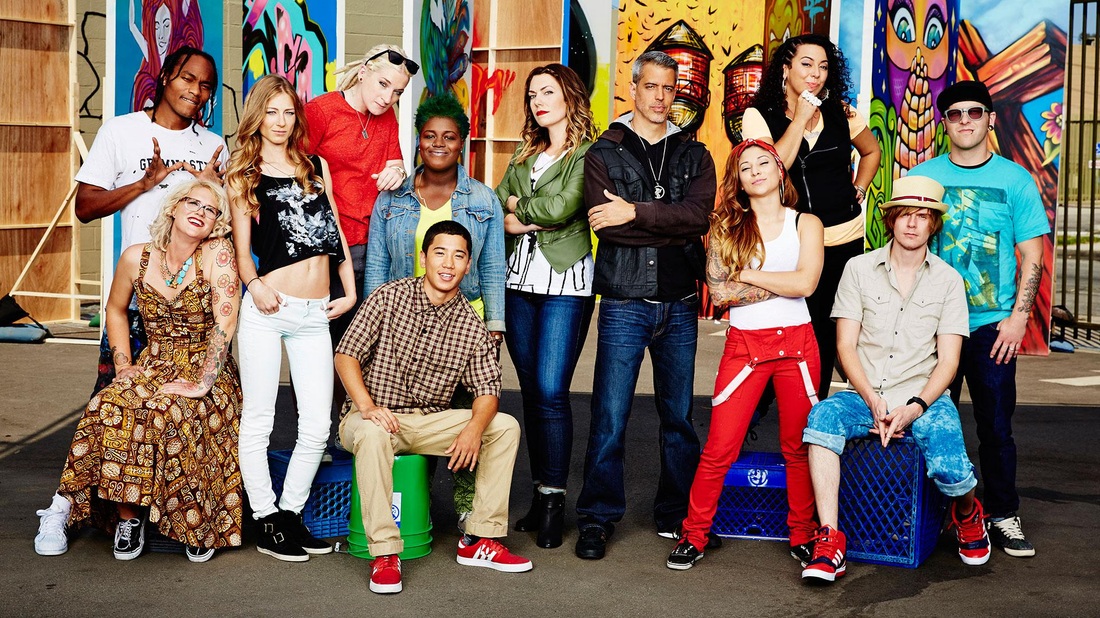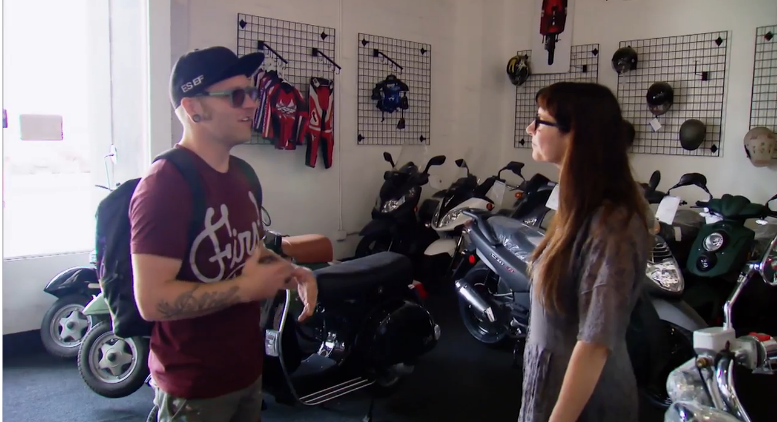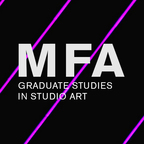"Street Art Throwdown" is the Oxygen channel reality show that picked a photogenic set of emerging street artists to compete in a series of challenges to win a $100,000 grand prize. This week marks the season finale as three finalists are prepped to battle it out in front of a national audience. My hope is that each of these artists finds a bigger audience from the show but there are a few aspects of the program that deserve attention and are worthy of a critical look and discussion.
A reality show on a form of art that attracts a tantalizing advertising demographic should not be a surprise. There have been a number of art themed television programs in recent years that have been met with varied success. From "Work of Art: The Next Great Artist" to "Gallery Girls," the movement and genre of street art is perfect for television because of the accessibility of the concepts and popular imagery associated with street art. Yet the commercial appeal of manufactured reality can quickly be transformed into cheesy dialogue if that arc of conflict is more important than the work produced. This show has plenty of these moments – not great for art making but good to build television drama that will entice viewers to keep watching.
While all the artists involved in the program deserve recognition and attention for their involvement with the show – this alternative reality misses the mark. Shots of the artists running and climbing fences have little to do with their success and instead make for action filled clips to use in commercials and promotions.
A facetious aspect of the show is the use of vocabulary and attempts to co-opt the language of the sub-culture – sometimes by the host, no less. From definitions of street art terms flashing across the bottom of the screen to several contestants spelling words wrong in their pieces – these instances did little to advance the culture of street art. It panders to the idea that these artists are not intelligent folks – something I don’t believe to be true.
"Street Art Throwdown", not unlike its predecessors in this TV genre, features timed challenges where the artists are provided a theme with limited materials. The demand for speed promotes the method of guerilla art, not the aesthetic. The result is often shoddy artwork that does not mirror a thoughtful creative process, a characteristic that does not have to be a standard. The artists involved in the show are talented and it would be fantastic to provide some conditions for them to showcase their gifts in a much stronger fashion.
The co-judges and hosts of the show are commercial artist Justin Bua (who is also executive producer) and gallery professional Lauren Wagner. Each has made a name for themselves in their respective area yet don’t have much cache in the street art world despite being fans and influenced by the genre.
Bua is particularly interesting. A born PR man, his successful print sales recall an urban version of Margaret Keane, the artist well known for creating inexpensive reproductions of paintings that pander to particular demographics. Wagner on the other hand is a galleriest that has the potential to offer an alternative voice, yet we rarely hear much from her besides describing their next challenge.
As an arts educator and critic, the most disappointing aspect of the show is the critiques offered by the judges. We find meaning in works of art through discussion and these ideas can be refined through careful analysis. It’s unfortunate that the individuals involved did little to facilitate such discovery. Too often the critiques were superficial and shallow. Comments on the importance of hands or the overuse of a color were commonplace.
This dialogue is a missed opportunity because solid interactions could give young viewers a way to engage visual objects beyond emotional and conventional responses. It’s also a chance to stretch the thinking on what art can be – and for a mass audience who only view street art as an act of a vandal, a reflective and critical lens could break down fears a mass audience may have.
In the end, it’s only a television show and an entertaining one. But the TV formula tells the viewer street art is not the real purpose of the show. That is unfortunate. The finale should have great drama, as well as exposure for the artists, and extend a base of support for all those involved, a recipe for success in today’s art world.



 RSS Feed
RSS Feed

